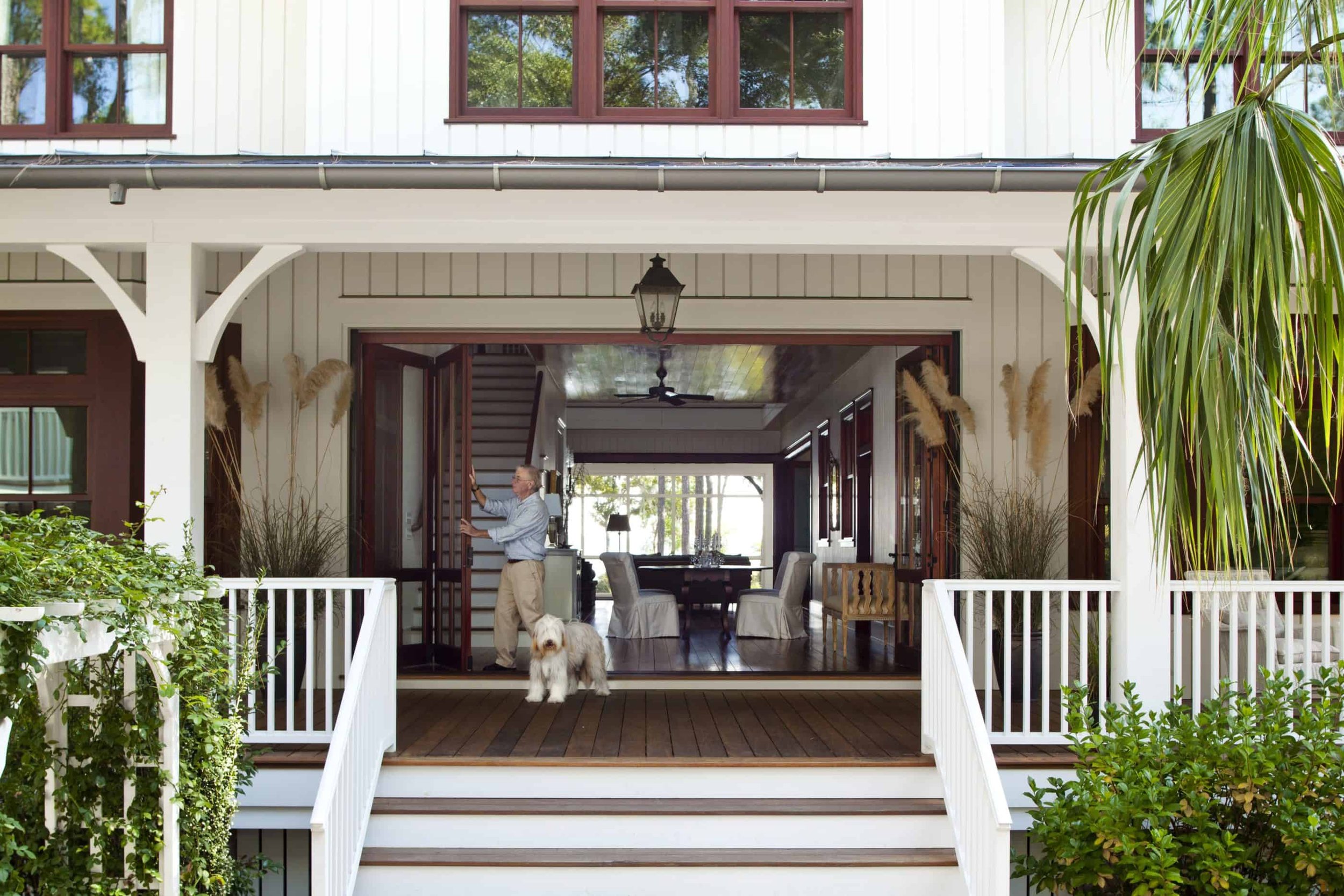What’ s a dogtrot?
As Europeans moved to the southern colonies, it took them about a generation to adapt their native architecture to the climatic conditions of the region. They learned that keeping houses to one room wide maximized cross ventilation. The narrow plans also provided the ample light needed to prohibit mold growth. The east to west orientation reduces solar gain, and windows are located to catch the prevailing summer breezes. Large porches, or verandas, are always located on the southern side, and often on the east and west, too. Verandas protect the house from both the sun and the rain, provide circulation, and create a cool place to sit and sleep in the summertime. High ceilings allow the heat to rise and provide a more comfortable environment. Raising the houses off the ground accomplishes several important things—it keeps the first floor out of the flood plain in coastal areas; breezes are better on the raised first floor; and air circulating under the house helps reduce the heat gain.
Also known as "two pens and a passage," the dogtrot is an early prototype that embraces these principles. One room was typically used for sleeping and the other for cooking. The covered open center passage was the main sitting room in warm weather and cooled naturally by the Bernoulli effect. The center passage was often used as the dog kennel and thus the name. Dogtrots are found in Alabama, Florida, Louisiana, Mississippi, Tennessee, Texas, and across the Carolinas. The original dogtrots were made of logs with a fireplace on each end. Later dogtrots were framed with wood siding. In his book, The Cotton Kingdom, Frederick Law Olmsted described a dogtrot he visited in Louisiana in 1850, "The house was a double log cabin—two log erections, that is, joined by one long roof, leaving an open space between. A gallery, extending across the whole front, serves for a pleasant sitting-room in summer."
In this contemporary home, the dogtrot space offers a sitting room overlooking the swimming pool and river. The house draws on the southern vernacular vocabulary of siting east to west with a single room width to maximize cross breezes. The dogtrot can be closed with custom made wooden gates, separating the master suite from the great room.
See more of the Riverfront Dogtrot.
This modern interpretation allows the dogtrot space to be opened up during good weather, or closed with folding glass doors and conditioned when it’s too hot or cold. Retractable screens keep the bugs out.
See more of the Palmetto Bluff Dogtrot.



